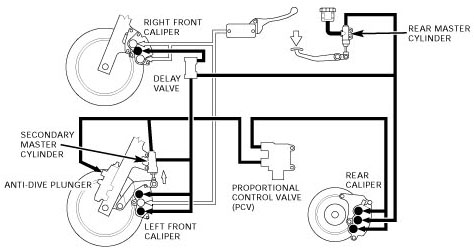Not that I want to get into a debate with Dale (Warchild), but...
First off, I am seriously thinking of *de-linking* the brakes on my 2006, but only because I don't like the idea of the rear brake pedal having anything ot do with the front brakes. I rarely, if ever, use the rear brakes, but if I do it is usually to settle the chassis in certain situations, and in those I particular instances I don't want any front brake at all.
But on the subject of needing all eight front caliper pistons "doing the job" in a "situation"... It's really unnecessary. If the 2006's didn't have ABS it would be easy enough to fully lock the front wheel at just about any speed with only six of the eight caliper pistons, so any more would be redundant. In fact, I imagine only one of the two discs would easily get you into lock-up.
With the ABS system the point becomes even more moot... It's not going to allow you to use as much braking force as you potentially have (I hate ABS systems on motorcycles, by the way... and will disable mine if I can do so without any side effects to other systems) onboard, anyway. Yamaha's ABS seems to have a pretty early threshold, too - i.e. it actuates way before impending lock-up. It does have an accelerometer, and my guess is it triggers the ABS at about 1-G of deceleration... Waaaaaaaaaaaay to soon. I get my 2006 into the front ABS all the time, and actually have to *fool* in order to brake as hard as I like on corner entry, by releasing the front lever just an instant after the ABS kicks in, and then hammering it again, and repeating that modulation as needed.
No offense, Dale... But in this case, six pistons or eight pistons, doesn't really matter. It's irrelevant.
Thanks!
Dallara





